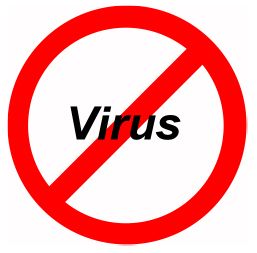 Security firm Kaspersky (the makers of Kaspersky Antivirus products) has just reported that the number of computers infected with Password Stealing Malware was up 60% during the first half 2019.
Security firm Kaspersky (the makers of Kaspersky Antivirus products) has just reported that the number of computers infected with Password Stealing Malware was up 60% during the first half 2019.
The vast majority of those infections involve Azorult, an extremely dangerous trojan-type virus that hackers use to steal a wide variety of user files and personal data (including passwords).
Kaspersky also reported that scans with Kaspersky Antivirus found Password Stealing Malware infections on 25% of all computers that are running the software.
That’s a LOT of computers just within the Kaspersky realm. It’s a virtual certainty that countless other machines that don’t have Kaspersky installed are infected as well.
A thorough scan with Kaspersky, Avast (my antivirus tool of choice) or some other quality antivirus software will find and remove any Password Stealing Malware it finds, but chances are by the time it finds and removes it your passwords and other sensitive data will already be stolen.
This is a very real threat, folks. Numerous online accounts are being compromised every day due to Password Stealing Malware infections.
I recommend that you follow the steps below right now to prevent this extremely dangerous form of malware from stealing your passwords and ultimately compromising your accounts:
1 – Don’t allow your web browser(s) to store your passwords. Just don’t!
If your browser(s) are already storing your passwords, I recommend that you remove those stored passwords immediately.
2 – Enable Two-Factor Authentication (2FA) on every one of your online accounts that supports it (virtually all reputable online services do support 2FA nowadays).
3 – If you have a file containing your passwords on your PC’s desktop or in any folder on its hard drive or SSD, you need to copy that file onto a USB flash drive or external hard drive and then delete it from its current location(s) on your computer.
Once you have your password file safely copied onto some form of external drive, DO NOT leave that drive connected to your computer when you’re not using it!
4 – Run a thorough scan with your computer’s full-time antivirus program to track down and remove any malware that might currently be installed on it.
5 – Run a scan with at least one “second opinion” malware scanner just for a little extra peace of mind.
6 – Repeat steps 4 and 5 on a weekly basis to keep your computer malware-free.
Bottom line: Password Stealing Malware is spreading like wildfire in 2019. You can greatly reduce your odds of falling victim to it by following the steps listed above.
Bonus tip: Want to make sure you never miss one of my tips? Click here to join my Rick’s Tech Tips Facebook Group!
If Facebook isn’t your cup of tea, I invite you to sign up for my Rick’s Daily Tips Daily Update Newsletter.
Want to ask Rick a tech question? Click here and send it in!
If you found this post useful, would you mind helping me out by sharing it? Just click one of the handy social media sharing buttons below.